With a billion users, it would be
understatement to say Facebook has done a good job of invading the desktop
world. However, mobile is the social network of the next battlefield: although
it has a remarkable presence on all of the important smartphone and tablet
platforms, the company is well-known in bringing its significant features to
the PC environment long before they appear on mobiles - if any
However, the release of Facebook Home on
April 4th, a stably built Android launcher, reflected a change in
attitude for the Mark Zuckerberg and company. Instead of just maintaining
presence on smartphones, Facebook has been willing to fight and brought mobile
up to the top of its list of priorities. Even it is adding an appropriate piece
of hardware into the arsenal in the form of the HTC First, a 4.3-inch device on
AT & T with LTE, the rational mid-range specs and a splendid screen. Is it
worth spending $99 with a 2-year contract to buy a phone dedicated to the
social movements? Should you wait until Home is available as a free download in
the Google Play Store? Or is it best to ignore it completely? Please keep
reading to find out.

HTC
First.
Hardware
It would be an understatement to say that
HTC First only slightly contributed to Facebook Home at the recent press
conference of the company; it was not revealed until several hours after Mark
Zuckerberg and a series of HTC/AT&T leaders stated their words. That does
not mean the hardware of the First is a cut liver, but even so, the forgotten
specifications is seldom a good sign. Besides the nod to the LTE radio and a
few detailed pictures with four available colors - black, white, light blue and
red - Facebook seemed to have nearly forgotten that the new hardware was being
introduced.
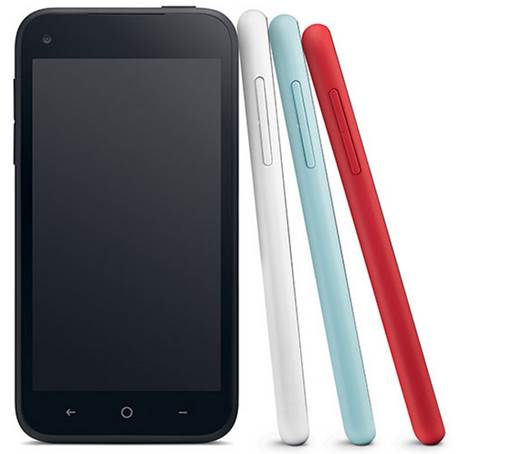
HTC
First with four available colors - black, white, light blue and red
We have currently had a real opportunity to
use the First for a couple of days; we are likely to be pleased to put an end
to any confusion about the hardware. In today's market, an Android phone with a
4.3-inch screen is considered small, and of course, the First feels like that:
with 125.99x65.04x8.89mm (4.96x2.56x0.35 inches), it is almost swallowed up in
the user’s hand, especially compared with all of the 5-inch devices we have
tested recently. It's incredibly lightweight as well, almost proportionate to
the weight of 4:37 ounces (124g).
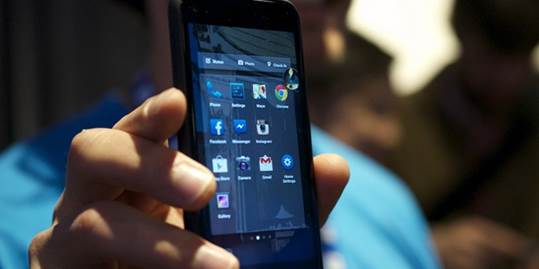
It
is almost swallowed up in the user’s hand.
Because the First is designed to impress
those who are addicted to Facebook, we will not be surprised that this is one
of the funniest-looking phones that HTC has ever manufactured. It is not that
there is anything extreme about the design, just something about the light
curves, numerous colors, and soft plastic shell that surrounds the entire
device, similar to the Lumia 620. (However, do not take that comparison too far
- the user cannot remove the shell here). All in all, it is a Facebook-focused
phone and indeed, it looks like that part.

The
First is designed to impress those who are addicted to Facebook.
In fact, it is almost as if the company is
going to return to its ODM roots by making any devices that other companies (in
this case, it is Facebook) have requests. Whether or not this is the beginning
of a new strategy for the Taiwanese manufacturers that still has been
considered, but we cannot stop wondering whether the "First" can
include more than one Facebook Home device that released or not.
On the front of the First, you will see
a4.3-inch, 720p S-LCD2 screen, which packs in a pixel density of 341 ppi that
is above average. Obviously, it cannot be compared with any 1,080p monsters
that we have been viewing, but these specs were on the top in 2012, and they
are still good today. Viewing angles are better than average; colors are pretty
saturated (but not too much); text is quite smooth, although it is not as good
as what we've seen on the 1,080p screen of the HTC One. The only disappointing
thing was the phone’s under-standardized performance in direct sunlight - even
at the maximum brightness, we found it hard to see the images and text clear.

On
the front of the First, you will see a4.3-inch, 720p S-LCD2 screen, which packs
in a pixel density of 341 ppi that is above average.
A 1.6MP front-facing camera sits on the
screen, even though it is located underneath the same panel of Gorilla Glass,
along with the usual arrangement of the sensors and LED notification lights.
The speakers are tucked in a small, narrow grille, which is located in between
the glass and the top edge on the phone. On the opposite side, you will find
three capacitive keys: back, home and menu. (Recent apps appear when you double
tap the home button, while a long-press of the home button brings up Google
Now).
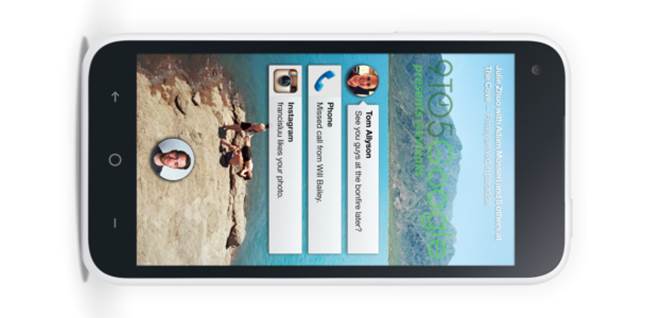
A
1.6MP front-facing camera sits on the screen, even though it is located
underneath the same panel of Gorilla Glass, along with the usual arrangement of
the sensors and LED notification lights.
Turn the phone over and you will take
notice that its back is entirely flat featuring the 5MP rear camera and LED
flash. If you just take a glance at it, you might think that there is nothing
else taking place in this side of the device, but you have a closer look at it
and you'll see: the logos for HTC, Facebook and AT&T are printed in very
pale ink color, along with the required FCC information below. The print is too
small, too discreet, so it is really hard to read in more blurred lighting
conditions. This is what we want to see other companies imitate on their
devices (Sprint has taken a major step by removing the logos from its branded
phones). We are also pleased to say the Beats Audio branding is not present; it
is rare for a post-2011 HTC device.
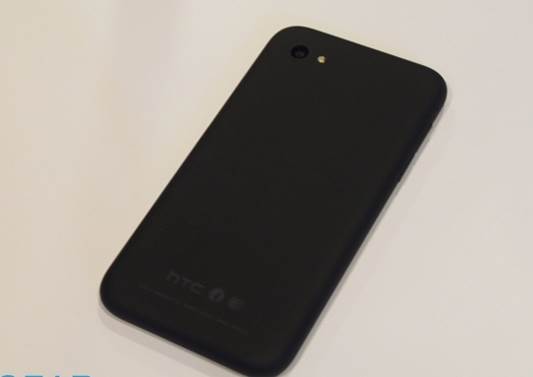
Turn
the phone over and you will take notice that its back is entirely flat
featuring the 5MP rear camera and LED flash.
At the top is a 3.5mm headphone jack and
mic, while the power button sits on the right. Because it sticks out of the
frame at least 1mm or so, it is easy to press that button. Meanwhile, the right
side contains the micro-SIM slot and micro-USB charging port. It is regrettable
position for the micro-USB charging port, but the bottom of the device – our
favorite location for the charging ports – is occupied by a speaker grille that
is drilled by machine. The volume rocker is seen on the left of the First.
Finally, if you are seeking a microSD slot or dedicated camera shutter button,
you will be frustrated.

At
the top is a 3.5mm headphone jack and mic, while the power button sits on the
right
The First is AT&T’s exclusive phone in
the U.S., and it uses LTE bands 4 and 17, HSPA+ 850 / 1,900 / 2,100 and
quad-band GSM / EDGE (the FCC documents also show the presence of LTE bands 2
and 5, like most other AT&T smartphones). On the other hand, the
international model promises LTE capacity on 850/1,900 as well as HSPA +
850/900/1,900/2,100 and quad-band GSM / EDGE. Both devices also offer dual-band
802.11a/b/g/n, Bluetooth 4.0, NFC, FM radio, a non-removable 2,000mAh
Lithium-polymer battery and 16GB of internal storage, (the users can access
11.9GB).
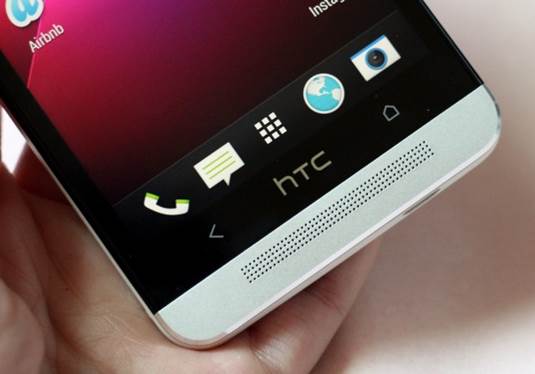
The
bottom of the device is occupied by a speaker grille that is drilled by
machine.